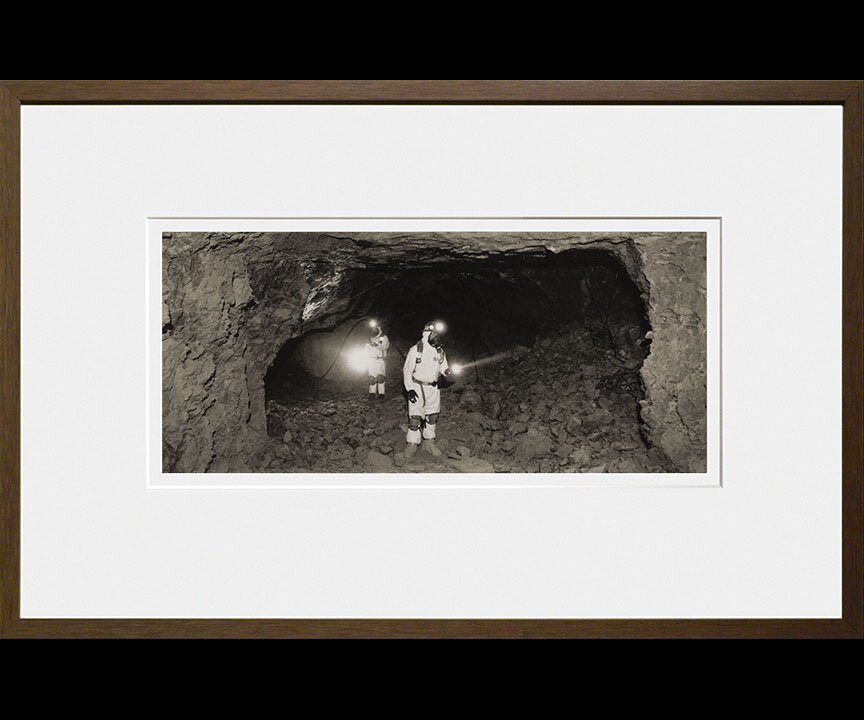One quarter mile inside Mi Vida, Utah, USA
7”x17” palladium print from original, in-camera negative
1/15 Limited Edition available.
The Mi Vida Mine is perhaps the most famous uranium discovery in the United States. Charles Steen was an petroleum geologist that worked in South America when he read the December 1949 issue of The Engineering and Mining Journal. In it, he learned the US government had issued incentives for domestic uranium prospectors and guaranteed the price of suitable ore. He left his job and headed to Utah as a prospector. Unable to afford a geiger counter, he relied on his knowledge of geology and put his fate in the Lisbon Valley.
The Mi Vida Mine going into production, 1952
He reasoned that uranium would accumulate in anticlinal structures like oil does. A large syncline called the Paradox Basin formed just west of the mountain range of the Valley. During the Permian period it was filled with a shallow ocean that frequently dried up, leaving huge layers of salt, which were eventually covered with sand dunes and the Mancos shale layer during the Mesozoic Era. The weight of these overlying layers caused the salt layers to shift and bulge in places and form depressions in others. As the salt bulged up, it cracked the sandstone layers into a series of parallel cracks. Water got into the cracks and created fins, or thin ridges which eventually eroded further into the arches that the area is famous for. But underneath it all lies the salt. Steen believed that any uranium that eroded off of the ancient Uncompaghre Mountains would accumulate in the Paradox Basin and be deposited in the sandstone found there, now pushed up into an anticline beneath the Valley.
With a second hand diamond drill bit, Steen set out to make his fortune and in 1952, after his drill bit broke at 300ft on a hard, black mineral, he discovered the deposit that would make him a multi-millionaire and spur the Uranium Boom of the 1950’s, forever change the Southwest.
In this image, Mike Schriber and Mike Spray explore the main adit of the mine a quarter mile inside Mi Vida. A hazardous environment, all the waste rock that litters the floor collapsed from the ceiling, or ‘back’ of the mine.
TECHNICAL DETAILS
Film stock: Kodak TMax 400 8”x20” film
Camera & lens: HF820 ultra large format field camera/ 355mm f9 Schneider G-Claron lens
Exposure details: Rated ISO 200 @ f32, 90 second exposure.
Filtration: #12 yellow
Processing: Normal development, Pyrocat-HD (2:2:100)
Printing: Na2 palladium with Nuarc 40-1ks UV exposure system



